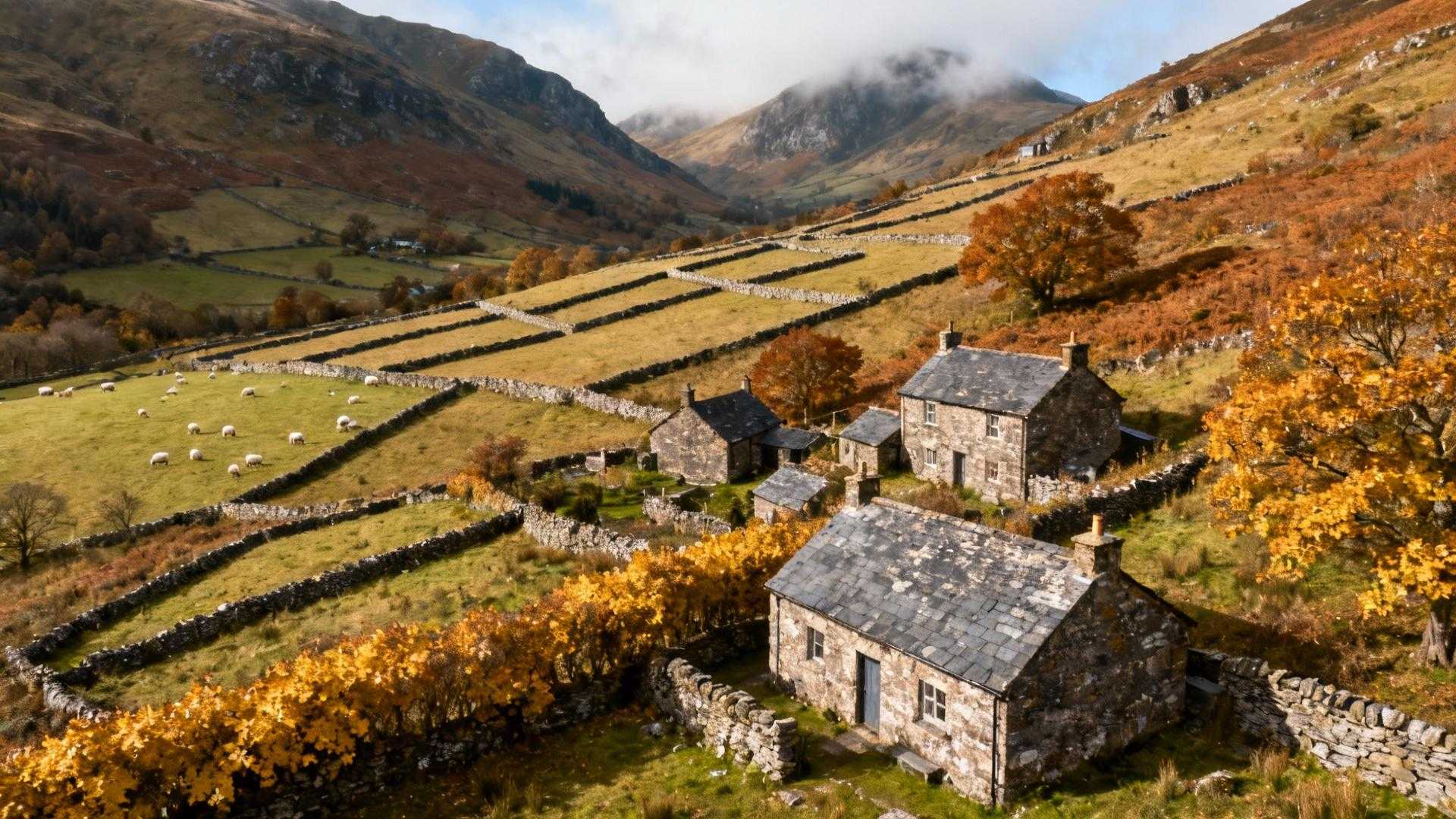Dawn breaks over Narberth, Pembrokeshire—a 2,000-resident market town where Michelin-starred chef Matt Powell forages wild garlic in hedgerows that border sheep pastures. No celebrity chefs film Netflix series here. No £400 tasting menus advertise on Instagram. Yet this Welsh valley, alongside Cardiff and Carmarthenshire, has quietly accumulated 10 Michelin stars since 2020, redefining Britain’s culinary landscape through hyper-local ingredients, ancestral techniques, and prices that make London’s food scene look absurd. Welsh chefs don’t call it a “capital”—they call it a cultural reclamation.
The valleys where foraging became fine dining
The 2-hour train from Cardiff to Narberth crosses landscapes that shift from urban sprawl to mist-covered hills dotted with 380-year-old stone cottages. Carmarthenshire’s rolling pastures give way to Pembrokeshire’s rugged coastline, where twice-weekly foraging trips yield seaweeds and samphire from salt marshes. This 90-mile corridor has become Wales’s unexpected culinary heartland, where 7 restaurants now hold Michelin stars and 99% of ingredients originate within Welsh borders.
Matt Powell explains the philosophy: “What grows together, goes together—that’s the simple sentiment at the heart of Annwn. I came out of Michelin star kitchens just had enough of that scene and just having this peace and tranquility to study what surrounds us again.” His 10-seat restaurant opened in May 2023 and earned a Michelin Green Star within months.
What 10 Michelin stars actually mean in Wales
Unlike London’s celebrity chef culture, Wales’s recognition comes through distributed excellence. Ynyshir in Machynlleth holds 2 stars, while Cardiff’s Gorse became the capital’s first Michelin-starred restaurant in 2025. The revolution isn’t centered in one location—it’s spread across valleys where locals guard food traditions from commercialization, similar to Montreal’s protected culinary culture.
The foraging philosophy that earned Michelin attention
Powell’s raised beds contain woodruff, angelica, and almost-extinct oyster leaf. His foraging covers 3 elements: hedgerow plants, shoreline vegetation, and seasonal fungi. October brings chanterelles, penny buns, and late-season gorse blossoms that infuse dishes with honey-like complexity. “Everything that surrounds me inspires me—the bird life, the plants, the berries, the soil that I walk on,” he describes.
Ancestral dishes locals never abandoned
Traditional cawl—a hearty lamb and vegetable broth—appears on modern menus reimagined with foraged woodruff and wild garlic. Laverbread, made from coastal seaweed, gets paired with samphire harvested from nearby marshes. These aren’t tourist novelties but living traditions that survived industrialization in Wales’s rural valleys.
Where to taste Wales’s culinary awakening
Annwn’s 10-course foraging menu costs £130, compared to £400+ for equivalent London experiences. The Walnut Tree offers 2-course lunches for £50, while Cardiff’s Gorse provides Michelin-starred dining without Copenhagen’s exclusive booking systems. Village pubs serve authentic cawl for £15-£30, maintaining accessibility alongside fine dining.
Michelin-starred foraging vs London’s celebrity dining
Powell’s 2-day foraging excursions combine education with luxury, covering hedgerow identification, coastal harvesting, and traditional preparation methods. Participants gather ingredients that become evening tasting menus, creating connection between landscape and plate. London restaurants import Welsh ingredients at premium prices, while Wales offers the source experience at half the cost.
The festivals and farm tours tourists miss
Abergavenny Food Festival welcomed 32,500 attendees in September 2025, with 68% local residents and 32% international visitors. Farm tours reveal cultural codes similar to Parisian dining etiquette—understanding seasonality, respecting traditional methods, and appreciating restraint over excess.
Why Welsh chefs refuse the “culinary capital” label
Tom Waters of Gorse Cardiff notes: “It’s not a case of copying or following a template, it’s a case of really leaning in to what you believe in and having confidence in what you’re doing.” This philosophy explains Wales’s reluctance to commercialize its food scene like Cornwall did with Rick Stein’s influence. Local residents worry about becoming “the next Padstow” where authentic food traditions get touristified beyond recognition.
A Pembrokeshire farmer explains: “Matt doesn’t just order—he comes to the farm, walks the fields, understands what’s growing when. It’s not transactional; it’s partnership.” Wales succeeds precisely because it markets experience over image, substance over spectacle.
Your Questions About Wales’s Food Scene Answered
How much does a Michelin-starred meal cost in Wales vs London?
Wales averages £130 for tasting menus compared to £350+ in London. The Walnut Tree’s 3-course lunch costs £42, while equivalent London meals reach £60-£80. Village pub meals with local ingredients average £15-£30.
What are the must-try Welsh dishes locals actually eat?
Cawl remains the national dish—lamb and vegetable broth with leeks and potatoes. Laverbread, made from coastal seaweed, appears at breakfast. Caerphilly cheese, Pembrokeshire lamb, and Welsh cakes from village bakeries represent authentic local flavors.
How does Wales’s culinary scene compare to Cornwall or Scotland?
Wales offers 7 Michelin-starred restaurants with less commercialization than Cornwall’s 9 star establishments. Scottish highlands have 18 stars but higher prices. Wales maintains stronger foraging focus and fewer tourist crowds per restaurant.
The train pulls out of Cardiff at dusk, passing valleys where smoke rises from village taverns and hedgerows hide wild garlic that becomes tomorrow’s Michelin-starred dish. Wales didn’t ask to be called a culinary capital. It just kept cooking the way grandmothers taught—and the world finally noticed.
